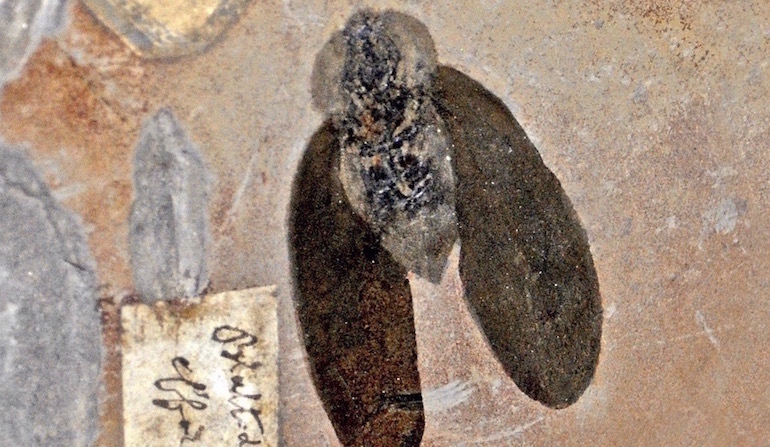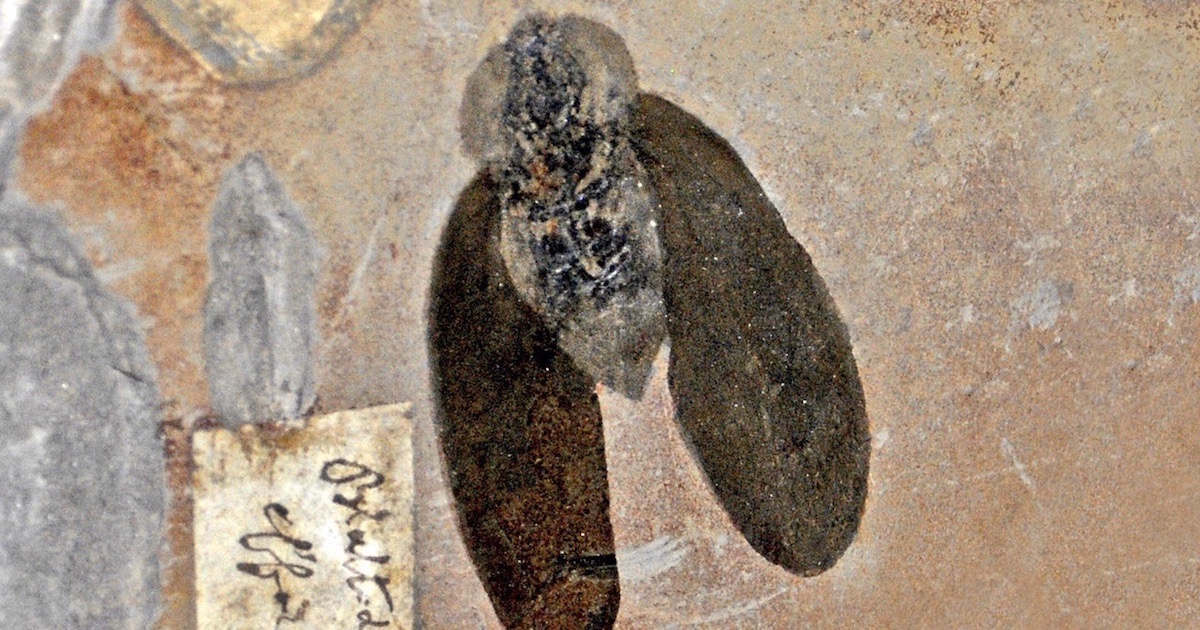 Evolution
Evolution
 Intelligent Design
Intelligent Design
A Smell Test for Design v. Evolutionary Explanations


If you’ve ever experienced sharing your home or kitchen with cockroaches, you know that these unpleasant critters seem to multiply faster than your can of Raid will spray, and they get into everything. Nevertheless, it’s good to report that some scientists have seen the value of trying to understand them and figure out why they are so successful. What they found is quite astonishing — and a good test case for comparing Darwinian with design explanations. The researchers published their work in Current Biology under the title, “Spatial Receptive Fields for Odor Localization.”
One of the reasons cockroaches are so successful is their keen sense of smell. Like many insects, including the more pleasing butterflies we all love, roaches smell with their antennae. We saw some micrographs of a butterfly antenna in Metamorphosis — an intriguing structure, to be sure, but loaded with more complexity than apparent even at that level. The cockroach antenna is called a flagellum, which just means any whip-like thing. But this is no ordinary whip. It is loaded with complex specified information in the form of olfactory sensory neurons (OSNs). The authors focused, on just one odorant, a molecule that is one ingredient of the roach sex pheromone odor cocktail. Male roaches need to follow the “odor plume” of periplanone-B to find a female, even in the dark. They come well equipped. The authors estimate there are some 36,000 OSNs for this odorant on the antenna.
Animals rely on olfaction to navigate through complex olfactory landscapes, but the mechanisms that allow an animal to encode the spatial structure of an odorous environment remain unclear. To acquire information about the spatial distribution of an odorant, animals may rely on bilateral olfactory organs and compare side differences of odor intensity and timing or may perform spatial and temporal signal integration of subsequent samplings. [Emphasis added.]
In other words, having 36,000 sensors is not enough. A male roach will be out of luck if he hangs around where the odor plume used to be. To track his beloved’s perfume, he needs to localize its source as she is moving. Previous studies had shown that the male tends to navigate to the edge of the plume rather than race to the center of highest concentration, a strategy that may serve to amplify spatio-temporal changes. But that strategy is not going to work without having a battery of high-tech instruments and software to interpret it. Again, the roach olfactory system comes well equipped.
PNs’ terminals are broadly distributed in the MB, a neuropil involved in processes such as multimodal sensory integration and associative learning. Here, we have shown that S-PNs’ terminals display a stereotyped distribution, suggesting that the spatial information encoded in the MG can be relayed to the MB….
Whoa, what? That’s the trouble with reading papers on olfaction. The jargon tends to be specialized and dense. So rather than try to define projection neuron, Kenyon cell, mushroom body and other unfamiliar terms, let’s keep it simple. Even the mouthful “macroglomerulus” comes from Latin meaning “big ball of twine.” Let’s give ordinary names to the important parts, based on analogies with familiar things (that’s what the original name-inventors did, anyway; “mushroom body” looks like a mushroom but doesn’t taste like one. Scholars can wade through the open-access paper with its specialized jargon to their heart’s content). We can call the macroglomerulus the string ball. It receives twangs from the triggers on the whip (flagellum, that is), carried on waves by strings. What we want to follow is the process, not the nomenclature. That’s where the real fascination is.
So we discover 36,000 strings plucked by the pheromone, reaching out to the string ball, carrying waves of “encoded information” (they do use that term) from up and down the whip. Let’s add some more complexity now. The whip looks like a guitar neck with frets along its length. Just as a guitarist changes the pitch by position, the information coming from the whip encodes spatial information: the strings at the tip “sound” different from those at the base. And just as the strings each have their own character, the scientists found 12 different kinds of strings responding to this one odorant molecule.
It’s like having a 12-string guitar, but there’s more. There are thick strings and thin strings. All of them plug into the string ball at very specific points. It might be best to shift analogies here, and compare the string ball to a mixing console with lots of plug-in inputs. The scientists found that the thin strings plug into distinct layers around one another in the mixing console, and the thick strings plug into overlapping inputs. The thick strings “sound” pretty much the same from along the guitar neck, but the thin strings have more specificity. In fact, the thin strings can even inhibit the twangs, something like a guitarist performing a “stop” action to produce overtones. They apparently do this to maximize resolution. The scientists found that this gives the thin strings a response area to plucking as fine as 1 millimeter.
As any sound engineer knows, the point where you plug in an input is very important. Also important is how you send the sounds down the line to submixes and mains, to get the proper blend of sounds. The scientists wanted to know if this spatial information was maintained in the next devices in the chain. Sure enough, the submixes found in the mixing board also are identifiable in the mushroom body, which we can call the program console. We’ve all seen the control rooms at TV stations where dozens of consoles line the wall. The program engineer selects between these inputs with split-second decisions to present a unified TV show to the viewer. In the case of olfaction, something similar happens. The brain can’t afford to get swamped by TMI (too much information) when what it is interested in is whether to follow the female this way or that. And remember, the program engineer is not just monitoring this one screen about this one pheromone signal. He’s got thousands of other inputs responding to other odors. It’s like having thousands of other instruments each sending their strings of information in real time down to their own mixing boards and on to the program manager’s console.
This spatial information has to be preserved, but it’s constantly changing. Each mixing board is updating its signal constantly. If you watched the “Pacific Salmon’s sense of smell” animation in Living Waters, it’s like that, and even more complex than shown. The proof of its effectiveness is the behavior: the salmon loses the scent on one tributary, and turns around to follow it up the adjacent one. The roach loses the odor plume in one direction, so it continually adjusts its steps to adjust to the constantly changing signal. The reason the roach follows the edge of the odor plume is because that’s where the concentration gradient and the dynamical information is likely to be greatest, giving the strings more nuance These animals respond faster than a program engineer does for TV. It’s amazing. Are you getting a little more respect for those household pests?
At the risk of overkill, let’s pile on more design by mentioning that all this complexity is constructed during development from a single egg. Furthermore, it has to be upgraded and improved, without breaking anything, during the 11 molts the cockroach goes through on its way to adulthood.
Let’s miniaturize it some more. News from the University of California, Riverside describes olfaction in fruit flies and mosquitoes, which are much tinier than cockroaches, yet just as responsive to odors. Here’s all you need to hear:
Odor receptors are proteins that festoon the antennae and sensory appendages on the heads of fruit flies. Odorant molecules plug into them like a key into a lock, activating the odor-detecting machinery in the fly brain to trigger behaviors such as homing in on ripe fruit. Deciphering the odor-detecting machinery has been incredibly difficult, said Ray, because the fly has more than 100 different odor receptor proteins, which feed into an even more complex odor-processing circuitry in the brain.
If you’re getting the idea that olfaction is a challenge to evolution, you’re right. That’s why Illustra took time to show it in Living Waters. That’s why it was (and still is) one of the most difficult senses to figure out. Even with our simplified analogies, the half is not being told. It remains an active area of research, and attempts to build “electronic noses” have been about as minimally successful as artificial intelligence. One thing we know is that every time we see a functioning system with similar complexity, we know it came from an intelligent cause.
So now, for our grand finale: let’s hear the evolutionary explanation! How will they tackle the following observations:
The use of highly specialized sub-compartment of the cockroach olfactory circuit as a model system has been instrumental in revealing a fine mechanism for the acquisition of spatial information on the olfactory surroundings. The direct correspondence of the antennal surface with a stereotyped antennotopic structure within the brain, coupled with continuous active sensing of the surrounding air space, provides the neuroanatomical means to generate an internal representation of the pheromone distribution.
The Darwin spokesperson steps up to the microphone to explain how this originated. Get ready: get set…
The distribution of [specialized neurons] within the macroglomerulus have [sic] evolved through hundreds of millions of years of selective pressure to efficiently localize the sexual mate and increase individual fitness.
All of this simply…“evolved.” That’s it? That’s it? Yes, that’s it. Simple as that.
Photo: Fossil cockroach, from the Carboniferous Period, by Hectonichus (Own work) [CC BY-SA 3.0 or GFDL], via Wikimedia Commons.
